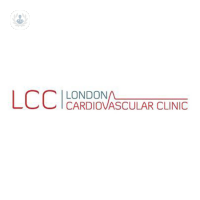What is a coronary angioplasty?
Coronary angioplasty is an endovascular procedure to improve blood flow to the heart by dilating arteries with balloons and stents (metal scaffolds).
Over time, fat-laden plaques tend to build up within the blood vessels, narrowing and hardening the arteries. A coronary angioplasty can help improve blood circulation to the heart whenever your arteries are too narrow or too obstructed due to coronary heart disease.

What is a coronary angioplasty for?
Coronary angioplasty can be done to:
- reduce the symptoms of coronary heart disease (angina and breathing problems);
- prevent damage to the cardiac muscle, caused by heart attacks;
- increase the life expectancy of people with heart conditions, and;
- improve weakened heart muscle caused by limited blood flow.
What does coronary angioplasty involve?
This procedure is less invasive than traditional coronary artery bypass graft surgery. It doesn't involve incisions or general anaesthetic, and recovery is quicker when compared to other surgeries.
Before doing an coronary angioplasty, you will need to have coronary angiography to determine exactly where the problem lies. This is often done in the same sitting as the coronary angioplasty itself. Local anaesthetic is used along with a sedative, so during the coronary angiography you will be awake. The whole procedure lasts between 30 minutes and two hours. In less than 90 per cent of cases, the coronary angioplasty procedure is performed via a small artery in the right wrist but rarely the tube is placed in a larger artery in the groin.
An introducer sheath is inserted into artery in the wrist (or groin). Through this introducer sheath, long catheters are passed up to the heart and dye is injected through the catheters into the coronary arteries to perform the coronary angiography first. If a narrowing is found, then an angioplasty can be performed at the same sitting or a later date.
The angioplasty is performed by passing a small wire across the narrowing and dilating the narrowing with balloons and stents thus restoring normal blood flow.
The risks of a serious complication caused by the coronary angioplasty procedure are low at less than 1 in 500. Serious complications include a heart attack, stroke, damage to the kidneys, bleeding or damage to the blood vessels requiring emergency surgery.
Post-operative progress
After an angioplasty, the recovery is relatively quick. Usually you go home the same day but occasionally, you may be in hospital overnight. After that, you’ll need to take some antiplatelet agents (such as aspirin) to avoid the risk of clots forming in the arteries.
Other treatment options
If you have obstructed or narrow arteries, other treatment options away from coronary angioplasty include optimising your tablet therapy and coronary artery bypass graft surgery.
10-20-2015 04-20-2023Coronary angioplasty
Dr Andrew Vanezis - Cardiology
Created on: 10-20-2015
Updated on: 04-20-2023
Edited by: Karolyn Judge
What is a coronary angioplasty?
Coronary angioplasty is an endovascular procedure to improve blood flow to the heart by dilating arteries with balloons and stents (metal scaffolds).
Over time, fat-laden plaques tend to build up within the blood vessels, narrowing and hardening the arteries. A coronary angioplasty can help improve blood circulation to the heart whenever your arteries are too narrow or too obstructed due to coronary heart disease.

What is a coronary angioplasty for?
Coronary angioplasty can be done to:
- reduce the symptoms of coronary heart disease (angina and breathing problems);
- prevent damage to the cardiac muscle, caused by heart attacks;
- increase the life expectancy of people with heart conditions, and;
- improve weakened heart muscle caused by limited blood flow.
What does coronary angioplasty involve?
This procedure is less invasive than traditional coronary artery bypass graft surgery. It doesn't involve incisions or general anaesthetic, and recovery is quicker when compared to other surgeries.
Before doing an coronary angioplasty, you will need to have coronary angiography to determine exactly where the problem lies. This is often done in the same sitting as the coronary angioplasty itself. Local anaesthetic is used along with a sedative, so during the coronary angiography you will be awake. The whole procedure lasts between 30 minutes and two hours. In less than 90 per cent of cases, the coronary angioplasty procedure is performed via a small artery in the right wrist but rarely the tube is placed in a larger artery in the groin.
An introducer sheath is inserted into artery in the wrist (or groin). Through this introducer sheath, long catheters are passed up to the heart and dye is injected through the catheters into the coronary arteries to perform the coronary angiography first. If a narrowing is found, then an angioplasty can be performed at the same sitting or a later date.
The angioplasty is performed by passing a small wire across the narrowing and dilating the narrowing with balloons and stents thus restoring normal blood flow.
The risks of a serious complication caused by the coronary angioplasty procedure are low at less than 1 in 500. Serious complications include a heart attack, stroke, damage to the kidneys, bleeding or damage to the blood vessels requiring emergency surgery.
Post-operative progress
After an angioplasty, the recovery is relatively quick. Usually you go home the same day but occasionally, you may be in hospital overnight. After that, you’ll need to take some antiplatelet agents (such as aspirin) to avoid the risk of clots forming in the arteries.
Other treatment options
If you have obstructed or narrow arteries, other treatment options away from coronary angioplasty include optimising your tablet therapy and coronary artery bypass graft surgery.


An expert guide to coronary angiogram for heart attack and stable angina patients
By Dr Pierluigi Costanzo
2024-12-14
Revered consultant cardiologist Dr Pierluigi Costanzo offers expert insight on when a coronary angiogram is indicated and details the use of stents in the procedure in this fascinating article. See more


What to expect from a coronary angioplasty?
By Dr Andrew Vanezis
2024-12-14
Leading cardiologist Dr Andrew Vanezis aims to provide an overview of coronary angioplasty to help you understand its purpose, process, and what to expect if you undergo this procedure. See more


Coronary angioplasty: Understanding the procedure
By Dr Saqib Ghani
2024-12-13
If you have narrowed or blocked coronary arteries, you may require a coronary angioplasty. Here to explain what’s involved in this operation is leading interventional cardiologist Dr Saqib Ghani. See more


Coronary disease: causes, symptoms and treatments
By Dr Andrew Vanezis
2024-12-13
A build-up of plaque in the arteries can lead to Coronary heart disease, which can cause angina, ischemia and even heart attacks. Learn about the symptoms and possible treatments here. See more
Experts in Coronary angioplasty
-
Dr Sayan Sen
CardiologyExpert in:
- Chest pain
- Pacemaker
- TAVI (transcatheter aortic valve implantation)
- Coronary angioplasty
- Palpitations
- Hypertension (high blood pressure)
-
Dr Andrew Deaner
CardiologyExpert in:
- Valvular heart disease
- Heart failure
- Palpitations
- Pacemaker
- Echocardiogram
- Coronary angioplasty
-
Dr Jonathan Byrne
CardiologyExpert in:
- Coronary heart disease
- Arrhythmia
- Hypertension (high blood pressure)
- Valvular heart disease
- Angina
- Coronary angioplasty
-
Dr David Lipkin
CardiologyExpert in:
- Coronary heart disease
- Angina
- Heart failure
- Coronary angioplasty
- Heart attack
- Palpitations
-
Dr Sohail Q Khan
CardiologyExpert in:
- Chest pain
- Angina
- Coronary angioplasty
- Coronary heart disease
- Hypertension (high blood pressure)
- Preventive cardiology
- See all

London Cardiovascular Clinic
London Cardiovascular Clinic
66 Harley Street, London, W1G 7HD
No existe teléfono en el centro.
By using the telephone number provided by TOP DOCTORS, you automatically agree to let us use your phone number for statistical and commercial purposes. For further information, read our Privacy Policy
Top Doctors

One Heart Clinic - Cardiology Consulting & Diagnostic Centre
One Heart Clinic - Cardiology Consulting & Diagnostic Centre
68 Harley Street, Marylebone
No existe teléfono en el centro.
By using the telephone number provided by TOP DOCTORS, you automatically agree to let us use your phone number for statistical and commercial purposes. For further information, read our Privacy Policy
Top Doctors

The Harborne Hospital - part of HCA Healthcare
The Harborne Hospital - part of HCA Healthcare
Mindelsohn Way, B15 2FQ
No existe teléfono en el centro.
By using the telephone number provided by TOP DOCTORS, you automatically agree to let us use your phone number for statistical and commercial purposes. For further information, read our Privacy Policy
Top Doctors
-
London Cardiovascular Clinic
66 Harley Street, London, W1G 7HD, W1G Marylebone LondonExpert in:
- Arrhythmia
- Cardiology
- Cardiovascular disease
- Hypertension
- Vascular Surgery
-
One Heart Clinic - Cardiology Consulting & Diagnostic Centre
68 Harley Street, Marylebone, W1G Marylebone LondonExpert in:
- Arrhythmia
- Cardiology
- Chest pain
- Cardiovascular disease
- Breathlessness
- Palpitations
-
The Harborne Hospital - part of HCA Healthcare
Mindelsohn Way, B15 2FQ, BirminghamExpert in:
- Digestive
- Cancer
- Orthopaedic surgery
- Thoracic Surgery
- Diagnostic Imaging
- Obstetrics and Gynaecology
- See all
- Most viewed diseases, medical tests, and treatments
- Electrophysiology study
- Genetic testing
- Testicular ultrasound
- Breast ultrasound
- Endovenous laser treatment (EVLA)
- Minimal access surgery (keyhole surgery)
- Aortic aneurysms
- Anxiety
- Long Covid
- Botulinum toxin (Botox™)








